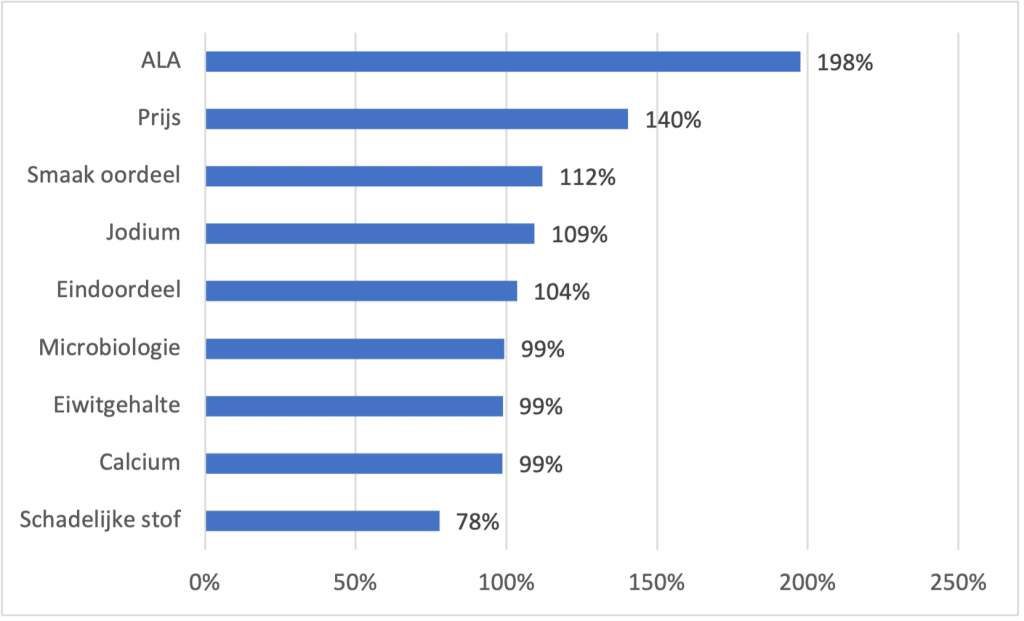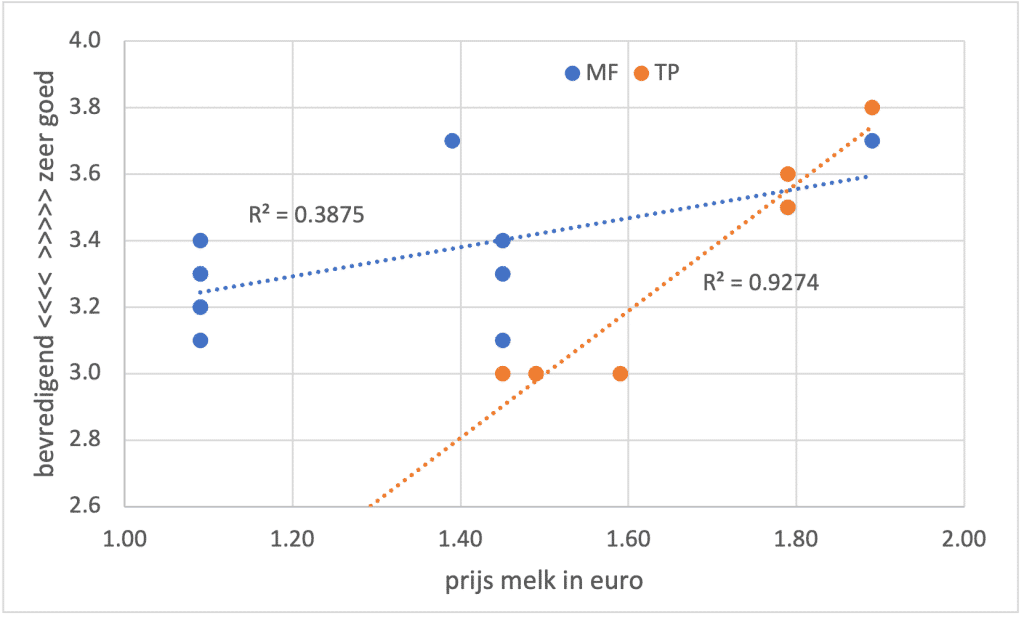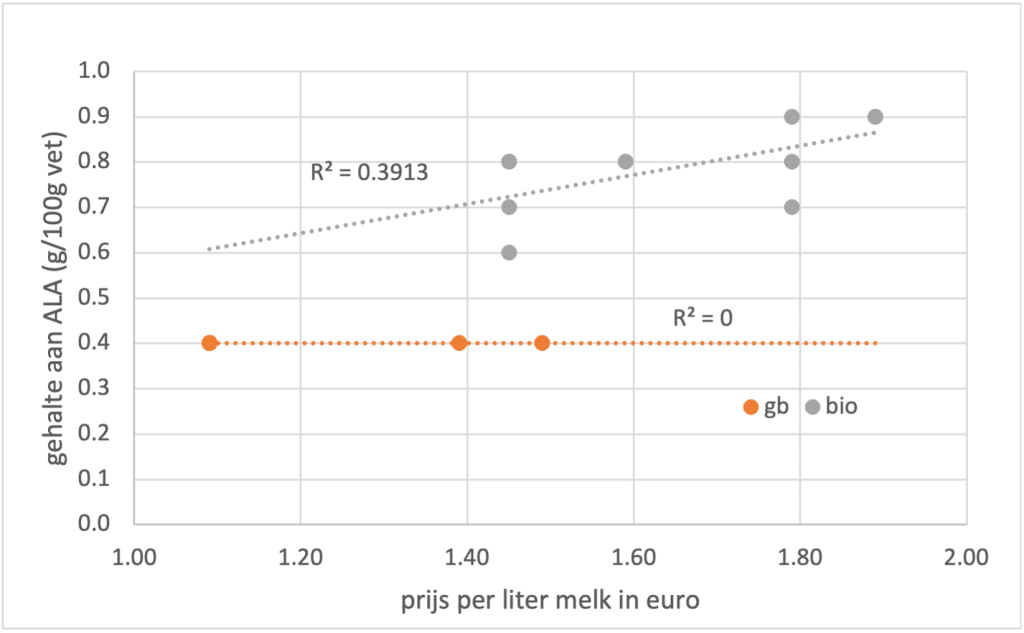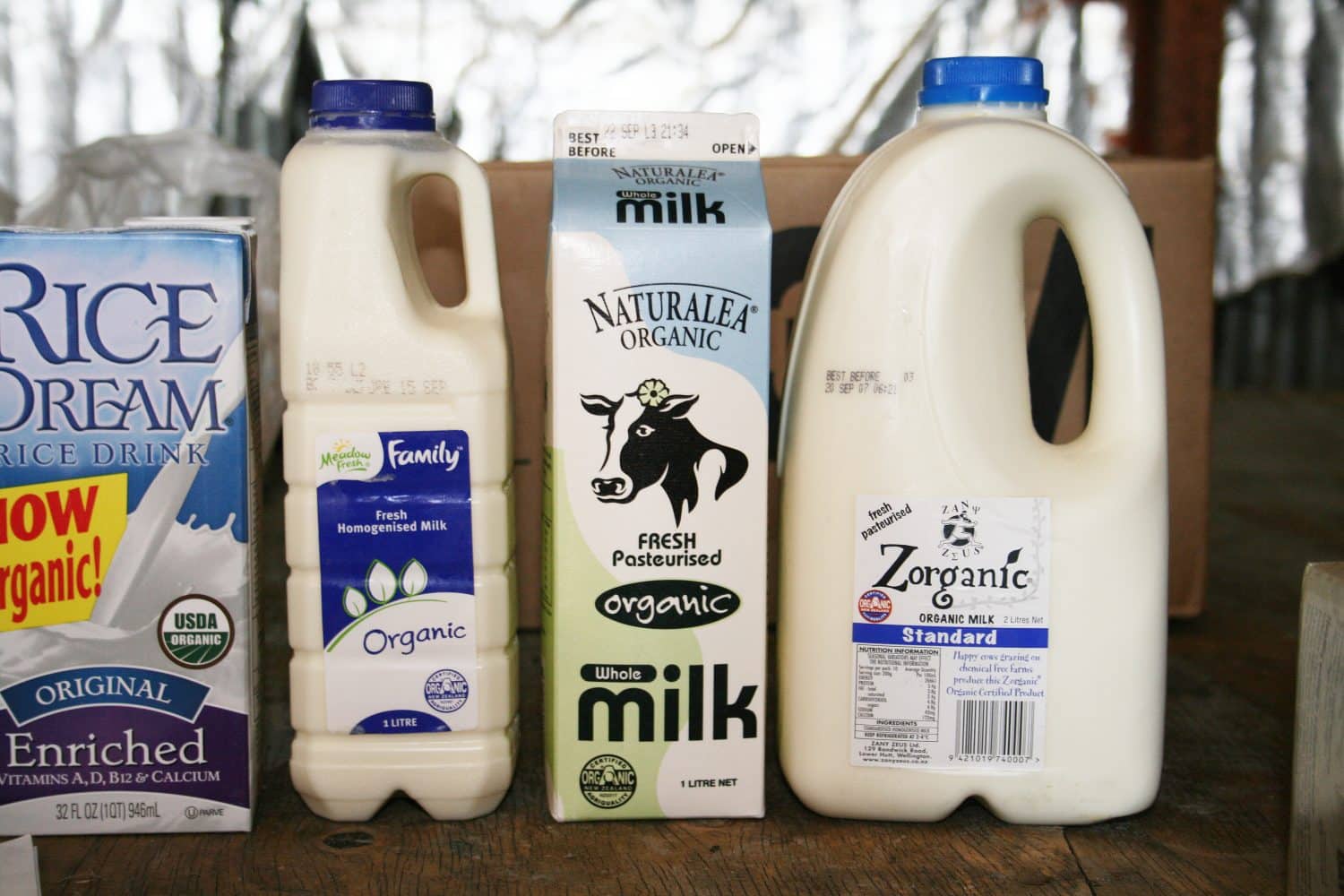Take home message
- The taste and weighted final verdict of 18 milks shows differences.
- Especially in Bio milk, there is a correlation between milk price and alpha-linolenic acid content and price and final verdict. High quality milk is more expensive.
German milk tested
In February 2023, Germany’s Ökotest on milk published pasteurised milk in two forms, traditionally pasteurised (TP) and pasteurised plus mikrofiltration (MF). The difference between the two manifests itself in the shelf life of the milk. Either about 7 days or else more like 14 days. Nice for the supermarket, which can now stock larger batches of milk.
18 brands were tested. Of these, 8 were conventional (CONV) and 10 were organic (BIO) milk. Only 6 origins were TP and 12 with supplementary MF. All the mainstream milk was MF and so were half of the organic milk. There was no TP mainstream milk any more. There were only 2 Demeter (= biodynamic) milk origins, the only milk that was not homogenised. All other milk was homogenised.
One problem in comparison is always, that the same milk is sold under different names. For example, milk from the Andechser Molkerei (Bavaria), is sold both in organic shops under its own brand name, and also at Edeka supermarket, under Edeka brand. It is also possible, for example, that Demeter milk is sold under Bioland label (not vice versa). What is tricky in terms of pricing is that there is milk sold in supermarkets and milk sold in small organic food shops. The latter tend to be more expensive than the former. For supermarkets, a low selling price of their milk is often a lure to get customers into the shop. Conversely, supermarkets may also be more likely to offer the organic milk itself in the higher price segment (speciality product). All this affects the price per litre of milk for consumers.
The following assessment was carried out by Ökotest how the final rating was affected (in brackets): selling price, taste (40%), harmful substances (10%), microbiology (10%), protein, calcium iodine, and alpha-linolenic acid (ALA) content. A final grade was constructed from various weightings. Some things were measured (concentrations), while others were rated on a scale of 1 to 5.
Three ratings are not included below because they showed almost no distinction between milk types, or because they are less relevant in terms of quality judgements: type of heat treatment (20%), packaging friendliness (5%), accuracy of description on packaging (15%).
The poly-unsaturated fatty acid, ALA is an important measure to assess the intensity of cows’ diets. The higher, typically the less maize silage and concentrates and the more grass products are fed. Furthermore, the region also plays a role, the more alpine, the higher the ALA content.
Relationships and differences
The graph shows the ratio of bio/conventional of the averages of the two groups. It is an indication of where the biggest differences are.

Organic milk scores much higher in content of ALA, this is 2x higher (fig. 1). You pay 40% more for this than for conventional milk. The measured levels of Calcium and protein show no differences, the iodine content is a bit higher. The assessment of taste and harmful substances (bad – good) fall in favour of the organic milk. The taste of organic milk is better (12%) and the weighted final assessment is slightly more favourable to organic milk (4%).
The testers themselves write, that it is striking that in the category with final rating ‘very good’, 5x organic milk appears and only 1x conventional milk. This applies to both the final rating and taste.

If you look at the relationship between price and final rating (in which everything is weighted together), the more expensive the milk, the better the rating is for both MF milk (blue) and TP milk (orange) (fig. 2). You can also say, that in the price a piece of quality is reflected.

Looking at the relationship between ALA content and price (Fig. 3), there is no difference within the mainstream milk (orange); all have a content of 0.4 g/100 g of fat. Between the organic milk samples you do see a relationship, and the more you pay, the higher the ALA content (grey). The three highest results (0.9 g/100 g) concern Schwarzwald Milch, €1.89 (Bioland), Denree Milch, €1.79 (Demeter) and Gläserne Heumilch, €1.89 (Bioland). Not coincidentally, the first two are sold in brown glass; Gläserne Heumilch in Tetrapak. Incidentally, 15 out of 18 milks were sold in Tetrapak.
Such a test is not a scientific test. The parameters are simply chosen and easy to measure. All in all, it does appear that if you are willing to pay more for milk, you can buy better quality milk.
Source
Stiftung Warentest (2023). Besser als ihr Image




